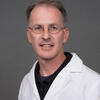Research Interests
Ion channels are a specialized class of proteins that form pores in cell membranes. Charged ions (such as sodium or potassium) can selectively flow through a channel's open pore, producing electrical current. The currents produced by the variety of ion channels in our cells and tissues gives rise to an important electrical component of cell signaling. The best known examples of this electrical signaling include the action potentials that we can observe in nerve and muscle
The research in my laboratory is aimed at figuring out how ion channels work at the molecular level. Our strategy to study channel structure and function combines patch-clamp electrophysiology, site-directed mutagenesis, fluorescence and NMR spectroscopy, X-ray crystallography and biochemical techniques to deduce a working hypothesis of the molecular architecture of a channel.
Our work is focused primarily on calcium-activated potassium channels. These types of channels are found in many organisms, ranging from bacteria and insects to humans. In higher organisms, the opening of these channels lets potassium flow out of the cell; this hyperpolarizes the cell membrane and decreases electrical excitability. In nerve cells, this translates to a decrease in action potential firing; in the smooth muscle cells that line blood vessels and the trachea, this translates to relaxation, so these channels may be therapeutic targets in the control of blood pressure and asthma.
We are interested in several fundamental questions. Which region of this channel is responsible for binding calcium? Which region of the channel controls the flow of ions through the pore, acting like a 'gate'? How do different parts of the channel talk to the gate, telling it when to open or close? We already know that the gates of an ion channel open only in the presence of the appropriate chemical or electrical signal, so by learning how different signals (like calcium) open and close the gates of channels, we can better understand how ion channels regulate electrical activity in different cell types.
My laboratory is fully equipped to perform patch clamp electrophysiology, site-directed mutagenesis and recombinant DNA techniques, fluorescence microscopy and spectroscopy, PAGE and western blotting, protein purification and crystallization, and lipid bilayer recording.
Education, Training & Credentials
- Research Fellowship, Neurobiology, Harvard Medical School, 2002
- Postdoctoral Fellowship, Physiology and Biophysics, University of Miami School of Medicine, 1999
- PhD, University of Florida, 1994
- BS, Neuroscience, University of Pittsburgh, 1987
Memberships
- Society for Neuroscience
- Society of General Physiologists
- The Biophysical Society
Honors & Awards
- Lyndon B. Johnson Research Award, awarded by American Heart Association, Texas affiliate, 2002

